Like any big settlement, people likely came to the site for different reasons. Some came to exchange goods and news or to meet people. Others were attracted by the site's natural resources. Still others came to create the site's mounds and ridges or to take part in ceremonies. Most probably had deep family ties in the area.
Whatever their reasons, those who took part in life at the site would have been transformed by their time there. They were in touch with people, things, and ideas from faraway lands. They also witnessed what people could achieve when they worked together.
It is easy to see the site today and forget that people built it over several centuries. The people who made the first of the site's mounds probably could not have guessed how the site would look 600 years later. View the images below to learn more about how the site developed.
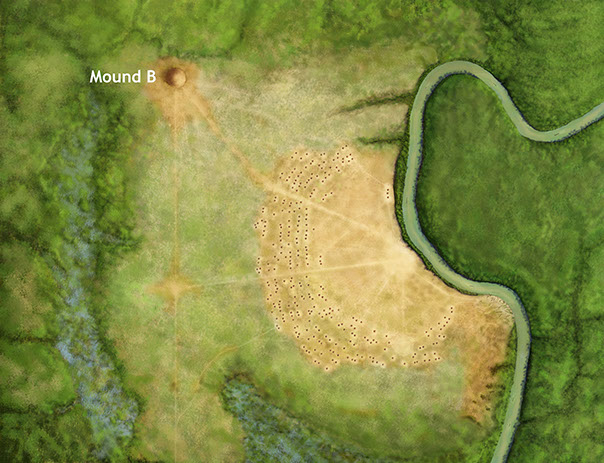
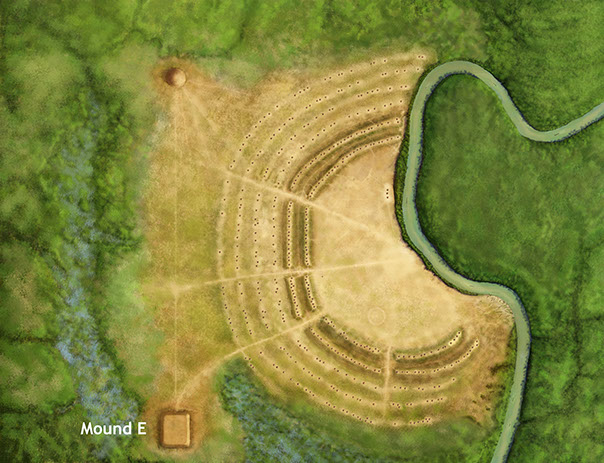
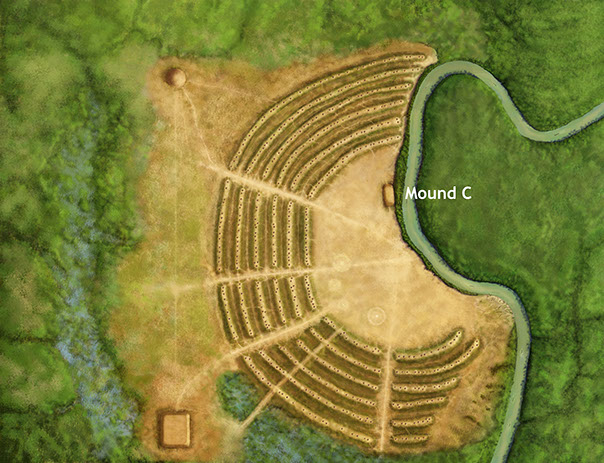
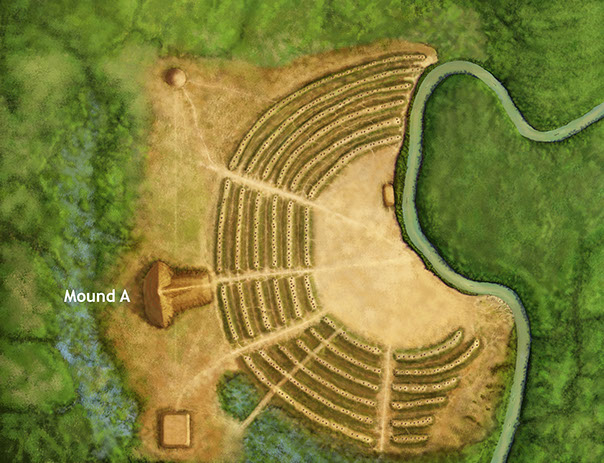
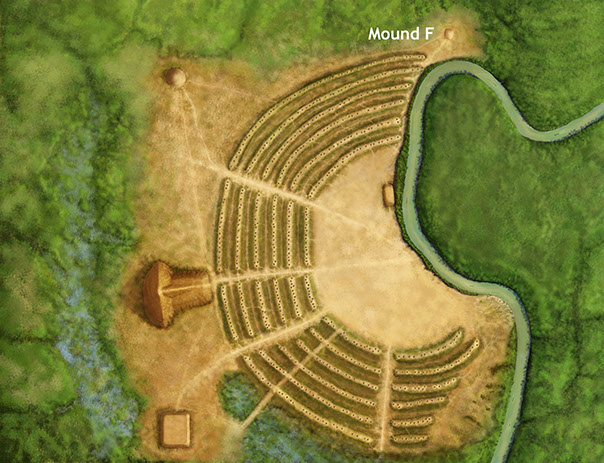
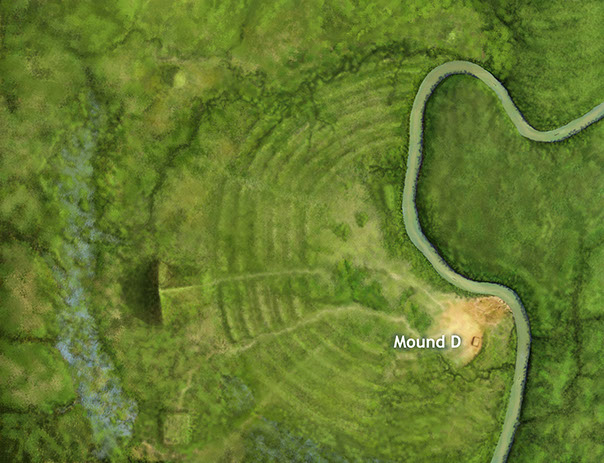
1. Mound B is the oldest earthwork at Poverty Point. The mound even predates the site's most unique features, its C-shaped earthen ridges. At this time, people were living in the area on which they later built the ridges.
2. American Indians built Mound E shortly after finishing Mound B. They also started building the site's ridges. In the northeast part of the plaza, people started using the space where they would soon build Mound C.
3. By the time people built Mound C, trade and ceremony at the site were well under way. Upkeep of the site would have been an ongoing task.
4. American Indians built Mound A around 1350 B.C., making the mound in three stages. Mound A was the largest of the site's mounds, requiring millions of baskets of dirt to make.
5. American Indians built Mound F sometime around 1200 B.C. It was the last mound built at the site during the Late Archaic period.
6. American Indians built Mound D around A.D. 700. It was nearly 2,000 years since the last mound was built at the site. The people who built Mound D were probably the descendants of the earlier earthwork builders.
6 - 6
<
>
Next
Back
Credit: Herb Roe